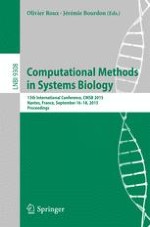2015 | OriginalPaper | Buchkapitel
Model-Based Investigation of the Effect of the Cell Cycle on the Circadian Clock Through Transcription Inhibition During Mitosis
verfasst von : Pauline Traynard, François Fages, Sylvain Soliman
Erschienen in: Computational Methods in Systems Biology
Aktivieren Sie unsere intelligente Suche, um passende Fachinhalte oder Patente zu finden.
Wählen Sie Textabschnitte aus um mit Künstlicher Intelligenz passenden Patente zu finden. powered by
Markieren Sie Textabschnitte, um KI-gestützt weitere passende Inhalte zu finden. powered by
